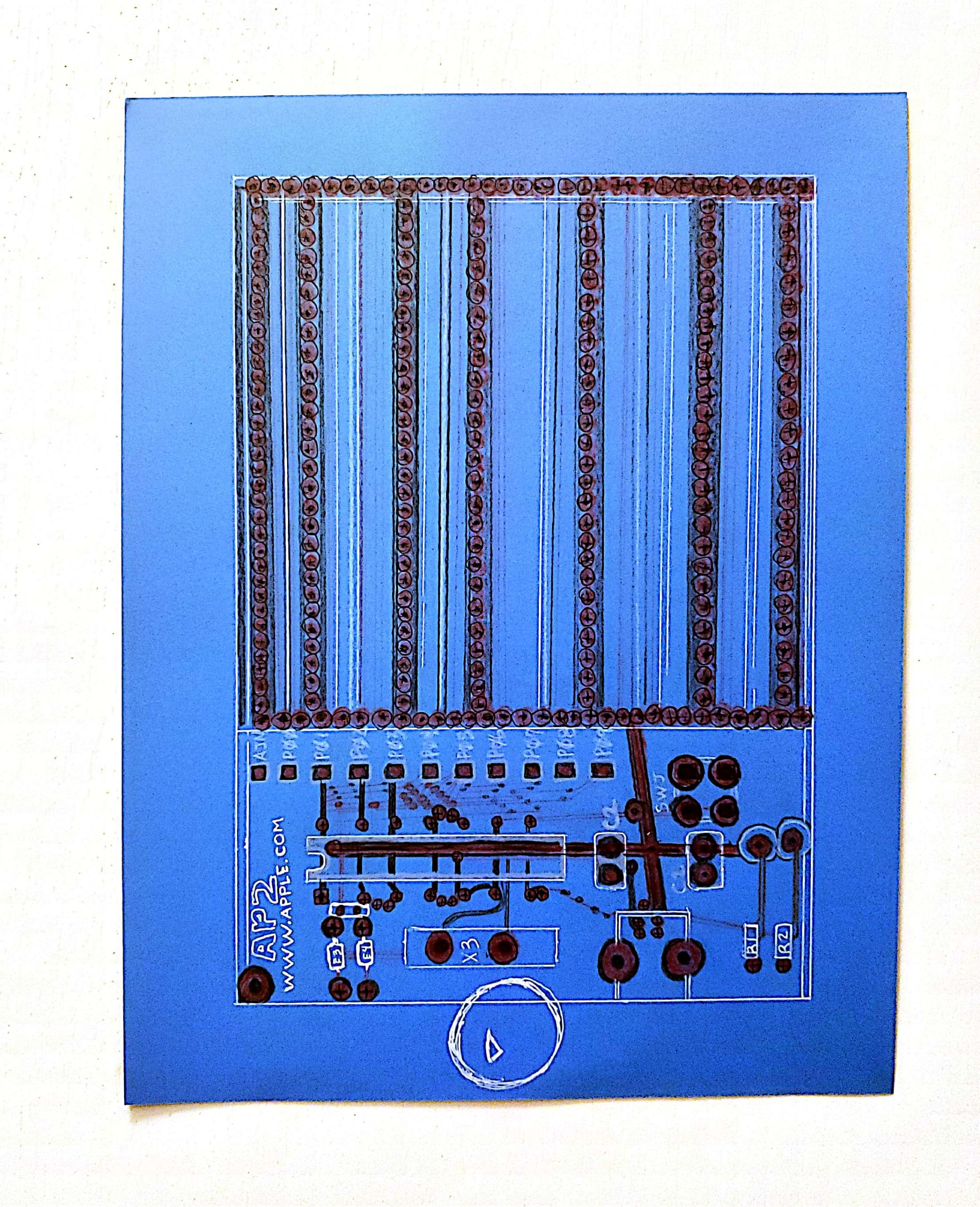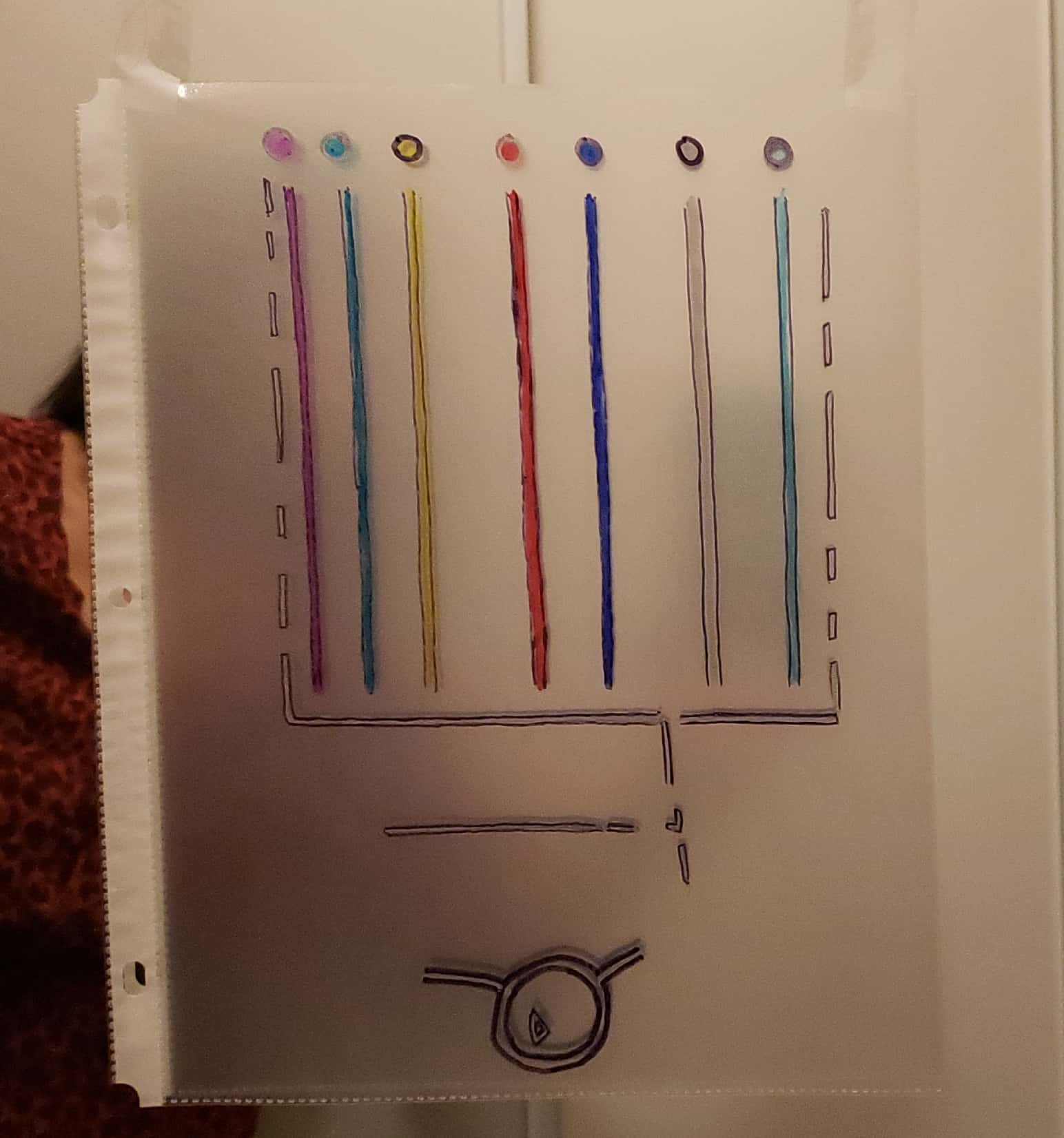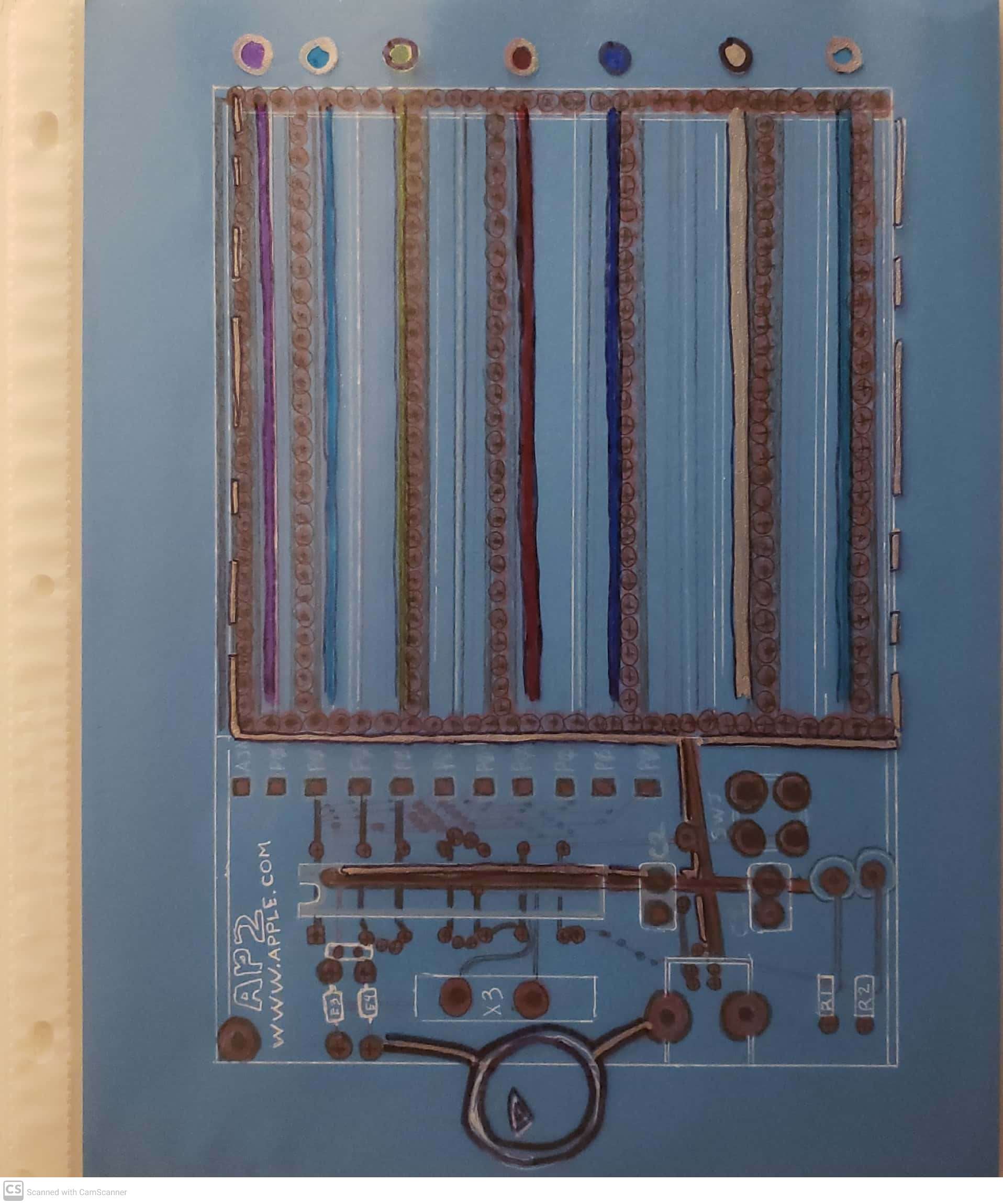Ecophysiological parasitologist Don Larson PhD of the Department of Biology and Wildlife of University of Alaska Fairbanks asks of his undergraduates to complete their STEAM projects or, Science, Technology, Engineering, Art, and Math projects for his course, Human Anatomy and Physiology with Laboratory 2 (BIOL112; CRN 34395) at the end of the academic year, 2020-2021.
The STEAM project I am doing is an art piece in the medium drawing of a circuit board that is a representation of how a single hormone can have an effect on multiple other hormones in the human body. The sphere with the color white that is reflecting light at the edge of the inferomedial border of the art piece represents a region of the forebrain the hypothalamus. The drawing of the hypothalamus on the blue sheet of paper is the origin that is respective to the drawings of the lines of the metallic silver color on the plastic cover sheet that travel in a direction that is superior through rectangular boxes of varying areas that are drawn on the blue sheet of paper. The rectangular boxes of varying areas that are drawn on the blue sheet of paper represent the anatomy of the human body that certain hormones that begin at the hypothalamus take to reach the large rectangle of the color white that covers the superior two thirds of the art piece, which represents the anterior and posterior pituitary gland. The large rectangle of the color white that covers the superior two thirds of the art piece represents the anterior and posterior pituitary gland because it is the origin that is respective to the seven spheres of multiple colors that are drawn on the plastic cover sheet at the superomedial border of the art piece.
The seven hormones the anterior and posterior pituitary gland secrete after the respective hormone from the hypothalamus secretes that are included in the art piece are growth hormone, prolactin, luteinizing hormone, follicle stimulating hormone, thyroid stimulating hormone, vasopressin, and oxytocin (Carmichael, 2021).
Mice whose genes responsible for development of neurons in the hypothalamus that produce growth hormone releasing hormone are underdeveloped exhibit traits of dwarfism because the hypothalamus does not secrete growth hormone releasing hormone nor activate the anterior pituitary to secrete growth hormone required for development (Huisman et al. 2021).
A mutation in the gene that codes for the receptor of the growth hormone releasing hormone has caused “short stature, doll facies, high-pitched-voice, central obesity, wrinkled skin, and youthful hair with delayed pigmentation, and virtual absence of graying” in 105 Brazilian residents of Itabaianinha County in a longitudinal study since 1994 (Aguiar-Oliveira & Salvatori, 2021, p. 1).
References
Aguiar-Oliveira, M. H., & Salvatori, R. (2021). Disruption of the GHRH receptor and its impact on children and adults: The Itabaianinha syndrome. Reviews in Endocrine and MetabolicDisorders, 22(1), 81-89.
Carmichael, John D. “Overview of the Pituitary Gland.” Merck Manual Consumer Version, Mar. 2021, https://www.merckmanuals.com/home/hormonal-and-metabolic-disorders/pituitary-gland-disorders/overview-of-the-pituitary-gland. Accessed 15 Apr. 2021.
Huisman, C., Kim, Y. A., Jeon, S., Shin, B., Choi, J., Lim, S. J., … Lee, J. W. (2021). The histone H3-lysine 4-methyltransferase Mll4 regulates the development of growth hormone-releasing hormone-producing neurons in the mouse hypothalamus. Nature Communications, 12(1), 256.




Daniela Krukoff explored the effects Kabuki Syndrome, where a single hormone being out of sorts can affect the rest of the hormones throughout the human body. She represents the Kabuki Syndrome though art, as a circuit board to show how one hormone can effect the rest of the hormones throughout the body. Through the blue sheet of paper provided, Krukoff represents the hypothalamus, citing that since it is the originating location of the Syndrome and is “…superior through rectangular boxes of varying areas that are drawn on the blue sheet of paper.” The blue sheet of paper also represents the different hormones within the hypothalamus within the body, and how certain hormones reach the second drawing provided. That white sheet represents the posterior and anterior pituitary glands because they are the origin of the seven spheres of multiple colors (hormones) that are represented on the plastic cover sheet that Krukoff shares.
Overall, this is a strong representation of the Kabuki Syndrome. I do wish that there was a little more explanation beyond what the Kabuki Syndrome is as far as how it mutates within the body itself, and more towards explaining how the Kabuki Syndrome manifests itself to those who are affected by the Syndrome. However, it was very interesting to see the ‘circuit board’ behind the Kabuki Syndrome and this STEAM project was very well organized and thought out. I found the presentation of the material itself to be well laid out and overall very strong. I enjoyed reading about this Syndrome!